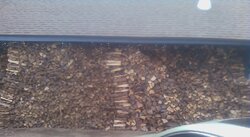Backwoods Savage
Minister of Fire
formula_pilot said:In my limited experience, if the wood is frozen, it dries very, very slowly. Last year I was given a load of punky maple that that was rather wet, and I just wanted to burn it to get rid of it. Even when split and tops covered, it did not dry much in the dead of winter, with all the water inside frozen. But as soon as daytime temps started to get above freezing, that stuff dried right out and it burned well (we get alot of wind here). Water will go from a frozen state to vapor, a process called sublimation, but it occurs at a much slower rate than evaporation from liquid state.
One cannot compare good wood vs punky junk even in the drying process. There is just too much difference in the two.


